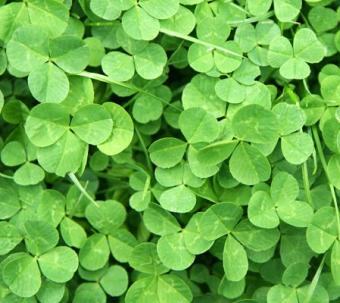Lawn Weeds

If you want a healthy lawn, the first step is to examine your grass and discover what weeds are invading the turf - checking out lawn weed pictures of the most common invaders can help you learn what to look for. Once you understand what different types of weeds you'll find in your lawn, you can take the appropriate steps to eradicate them safely and responsibly.
Dandelions

Dandelions are one of the most familiar and most easily recognized weeds. Their soft yellow, round blooms go to seed to form a fluffy sphere that contains thousands of seeds that can spread throughout your lawn, but if you dig the weeds out or use a broadleaf herbicide, you should have success removing dandelions from your lawn.
Thistle

Canadian thistle and related thistle weeds come in a wide range of varieties. These are perennial plants and they will recur each year if not taken care of properly. These plants are easily recognized by their low, broad leaves, spiked edges, and prickly texture.
Foxtail Grass

Foxtail grass, also known as foxtail barley or wild millet, has a large, heavy seed head that towers above most lawns. The seeds can become embedded in the jaws and skin of pets and livestock, so it is best to keep this weed under careful control. Consistent mowing will keep the seed heads from forming, and cultivating your lawn to a lush, dense turf will keep foxtail grass from taking hold.
Ragweed

Ragweed, or ambrosia, produces a tremendous amount of pollen and is responsible for many hay fever allergies. There are 17 species of this lawn weed, and it is useful to known what to look for when trying to remove this plant. Tall stems, long leaves, and narrow seed heads all indicate ragweed.
White Clover

White clover can be a pretty ground cover, but this perennial plant spreads rapidly and can quickly crowd out grass and other desirable plantings, therefore classifying it as a weed. It is a broadleaf weed, with three characteristic leaves and small white flowers that form in late spring and early summer.
Star-of-Bethlehem

Not all flowers are perfect for planting. Flowers such as Star-of-Bethlehem are actually weeds and can choke out nearby plants if they're allowed to become established. This is a perennial plant that forms from a bulb, and care should be taken that the bulb is fully removed or destroyed to prevent the plant's re-growth.
Henbit

Henbit is a weed that sprouts pink or purple flowers in the spring, and it's common on many lawns. Because it blooms so early in the growing season, the best way to control henbit is to apply a pre-emergent herbicide in the fall to avoid spring growth.
Chickweed

This weed is a prolific grower in spring, and it is also known by the names starweed, bindweed, and winterweed. To keep it from invading your lawn, use a strong pre-emergent herbicide so the plant does not get an opportunity to become established.
Wild Onion

Wild onion plants are bulb plants very similar to agriculturally grown onions, but they can quickly become a nuisance in an otherwise healthy lawn. The thin, smooth stems are topped with white, spindly flowers that will develop into additional bulbs to germinate once they drop to the ground, making it important to control the weeds before that bulb is mature.
Morning Glory

While morning glory vines can be beautiful, they are considered invasive and annoying in many places because of their rapid, spreading growth and easy climbing ability. To control morning glories, use a pre-emergent broadleaf herbicide in problem areas.
Sign up for our newsletter featuring all the latest stories and products we love.
Mushrooms

While mushrooms and toadstools are fungi rather than weeds, they can still be unsightly and unwelcome guests on an otherwise pristine lawn. They grow rapidly in rich, moist soils, but most varieties of mushroom will not harm the lawn. They can be picked and discarded, or killed through mowing. If the problem spreads, fungicide treatments may be necessary.
Wood Sorrel

Wood sorrel is an edible weed with a tangy taste. The plant is slightly toxic, however, and should not be consumed in large quantities. Also known as yellow oxalis, sheep sorrel, and yellow sour grass, this weed responds well to herbicide treatments that can keep it under control.
Poison Ivy

In overgrown areas, poison ivy can become a weed problem. This weed is best known for the itchy rash it inflicts on individuals who brush against the plant, a reaction caused by the plant's urushiol toxin. When working to remove poison ivy from your lawn and yard, always take proper precautions to avoid contact between the plant and bare skin.
Healthy Lawn

A healthy lawn isn't hard to create if you recognize different lawn weed pictures and know how to properly control the weeds that do invade your turf. Building solid, strong, lush turf is your best defense against weeds, and in time the lawn will be weed-free.
Need more information about keeping your lawn and garden looking their best? Check out:
- Identifying Garden Pests
- How to Kill Weeds
- Identifying Plant Disease







